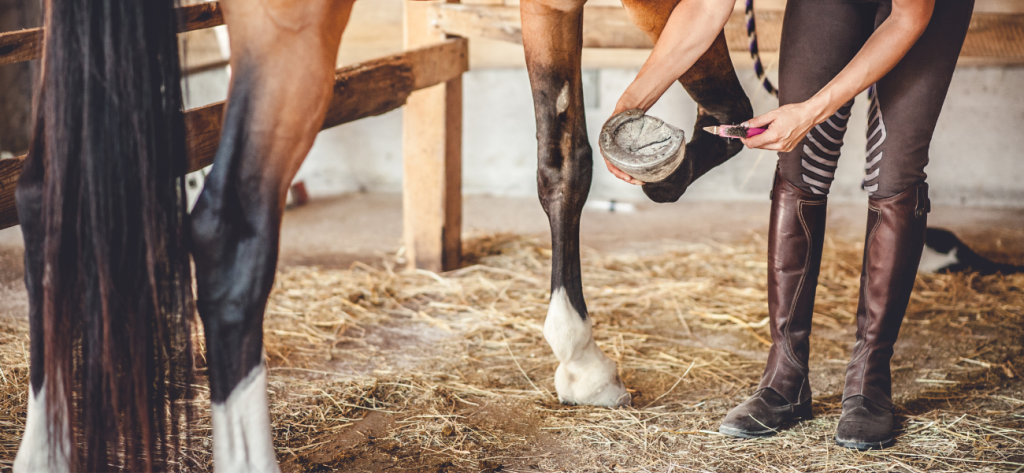Equine Hoof Abscesses
Walking into the barn and finding your horse three legged lame is a terrifying thing for any horse owner. One cause of sudden, severe lameness in horses are abscesses. An abscess occurs when bacteria enter the hoof and become infected creating pus, inflammation, heat, swelling and often severe pain.
Prevention
Hoof abscesses can’t be completely prevented, but there are preventative measures you can take to reduce the chance. These include:
– Routine farrier care. Keeping up with regular visits with your farrier is important to ensure that the hoof is maintained in good condition and does not develop cracks. Your farrier will get to know your horses’ individual hooves and be able to help guide you on how to care for them daily between visits.
– Daily cleaning. Regularly cleaning your horses hooves and removing debris is any easy way to help prevent hoof abscesses. You should check your horses hooves daily when turning them out and bringing them in from the pasture, after being worked and before loading onto a trailer.
– Pasture management. Dry and wet conditions can both cause hoof issues. When horses are turned out in muddy pastures it can weaken the hoof and the increased moisture provides a prime area for bacteria to grow. Dry conditions, especially when horses are outside and stomping flys on the hard ground can lead to hoof cracks. You can speak with your farrier and discuss the current pasture conditions and your horses hooves to decide if there are any topical treatments that could be beneficial.
Diagnosis
Checking a hoof for heat and a pulse is a good early step in the diagnosis of a severe lameness in a horse without any other obvious signs of where the pain/injury might be. Veterinarians and farriers will diagnose a hoof abscess with hoof testers, an instrument that pinches the foot while applying pressure to the sole. A horse testing positive to a hoof tester is a horse showing a pain response to the tested area. This gives veterinarians and farriers a starting point to know where to open an abscess, if they decide that is the route to you. You should never try to open an abscess on your own.
Treatment
Despite best efforts in looking after your horses hooves they can still develop abscesses. Knowing how to care for an abscess can help for those times that your horse might develop an abscess despite your best efforts.
-Thoroughly clean the whole hoof.
– Soak the hoof. Soaking the foot in a warm water with Epsom salt can help to draw out the infection. You can also add some povidone-iodine solution to the warm water Epsom salt soak or ask your farrier about commercial soaking solutions they recommend.
– Wrap the hoof. After you have soaked the hoof you can wrap it to help keep it clean. Adding hoof poultice such as animalintex can help in continuing to draw out heat and infection from the hoof. We recommend using the Deluxe Equine Slipper for this.
– Call or text your farrier. Keeping your farrier up to date on your horses abscess progress is helpful and can help to get their advice for any specific treatments they might recommend. Your farrier might also need to remove your horses shoe in order to treat the abscess.
References:
https://vet.purdue.edu/hospital/equine/tips/equine-hoof-abscesses.php
https://www.usef.org/media/equestrian-weekly/hoof-abscesses-tips-for-treatment-prevention
https://blog.farmvet.com/2022/06/16/tips-and-tricks-for-abscess-treatment/
https://extension.umn.edu/horse-health/hoof-abscesses

